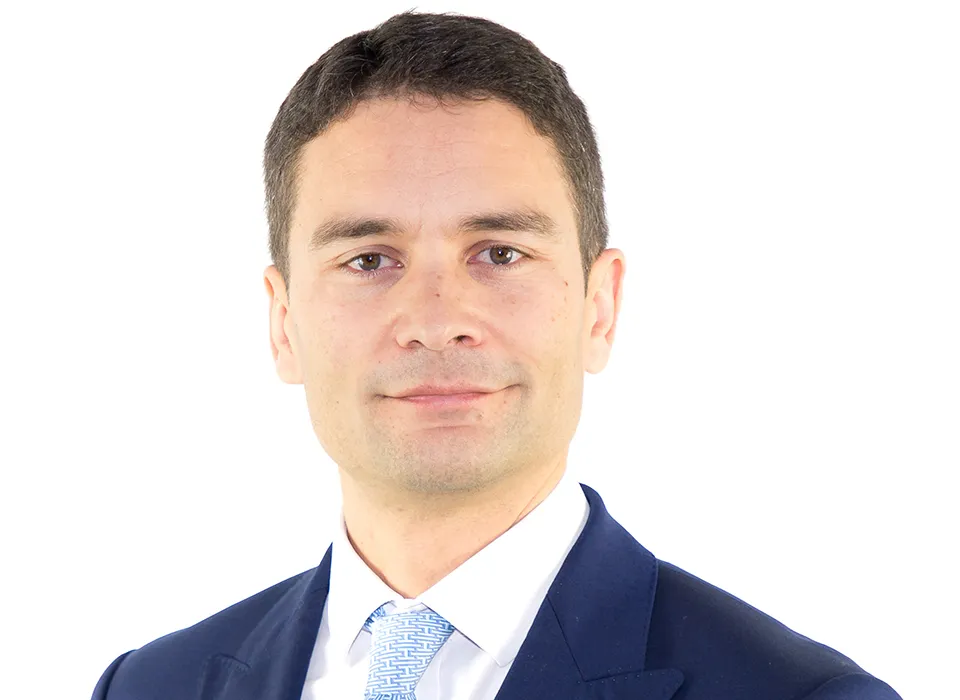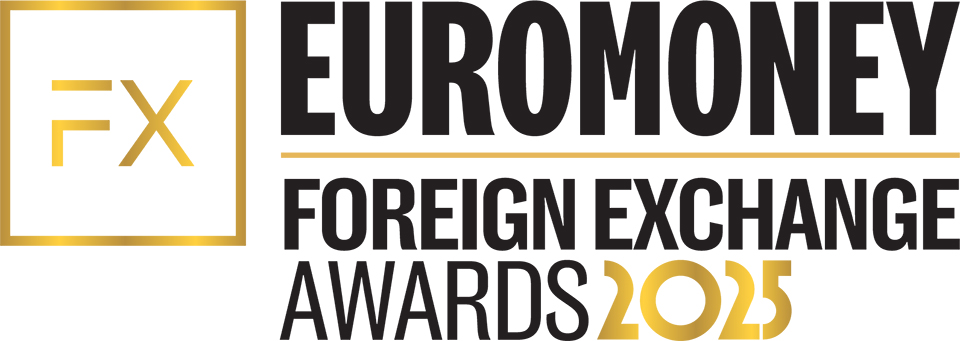UBS strengthened its position as a leading global provider of spot FX in 2024, combining scale, technology investment and client-focused execution.
UBS continues to play a central role in global spot FX, serving more than 2,500 institutional and corporate clients worldwide, supported by a distribution network integrated with its leading wealth-management platform. This breadth provides access to liquidity across electronic, voice and agency channels, allowing UBS to tailor execution strategies to the specific needs of diverse clients.
In 2024/25, UBS maintained a spot market share above 12%, supported by significant year-on-year volume growth. Gains in 2024 were broad-based: G7 currencies all saw growth, with AUD and NZD performing particularly well. In emerging markets (EMs), UBS expanded its share, with leading positions in EMEA currencies such as PLN, HUF, TRY and CZK. Particularly striking was its advance in MENA, where shares in the UAE dirham and Saudi riyal rose significantly, supported by growing client demand.
The 2024 integration of Credit Suisse’s spot trading technology into UBS’s Cobra order book was a milestone. By transferring more than a million Credit Suisse client relationships to UBS infrastructure, the firm expanded its client franchise and boosted volumes. A similar initiative in Asia-Pacific contributed to a 12% increase in FX volumes across the region in 2025.
The integration has also given UBS an opportunity to deepen relationships across wealth management and institutional client bases. With the migration of Credit Suisse order flow now complete, the next phase will involve moving legacy UBS clients onto Cobra, supporting a fully integrated trading ecosystem.
Leading by latency lowering
UBS has invested heavily in technology to maintain its position as a leading liquidity provider. A key focus has been reducing latency in data delivery and trade execution. Improvements in network capacity cut distribution times between New York and Tokyo to below 70 milliseconds, while upgrades to UBS’s order-acceptance logic reduced median round-trip times from 5ms to 3ms, with significant gains at the tail end of execution.
The rollout of the eCredit 2.0 engine further enhanced execution quality, enabling automatic approval of larger trades at low latency. Clients have reported fewer rejections and better fill rates during periods of volatility. UBS plans to extend this capability to non-deliverable forwards (NDFs), expanding its reach beyond spot FX.

Our system is known to do well under volatile market conditions. It’s a feature we are very proud of
Mathieu Reaud
These upgrades illustrate UBS’s strategy of combining advanced quantitative research with practical execution enhancements, ensuring consistent performance even when market conditions become stressed.
UBS’s ability to internalise up to 98% of daily flows gives it an advantage in managing client execution. By matching offsetting orders from its wealth management, institutional and internal desks, the bank minimizes market impact and information leakage. This strategy is particularly valuable during volatile conditions, when spreads widen and external liquidity can thin out.
Market resilience
EMs have been an important growth driver for UBS’s FX spot franchise. In 2025, the firm expanded liquidity provision in regions such as MENA, where integration with Credit Suisse boosted flows and client engagement. UBS also leveraged its CNH capabilities, adding scale in Asia and developing analytics and tools to support client hedging and execution strategies.
This focus on EMs aligns with UBS’s strategy to combine wealth-management distribution with institutional trading services, extending liquidity provision into regions where clients increasingly demand depth, reliability and market insight.
A consistent theme across UBS’s FX operations has been the ability to maintain competitive pricing and liquidity during periods of volatility. In April 2025, when US tariff headlines created sharp market dislocations, UBS maintained tight spreads and uninterrupted service while some peers pulled back.
April 2025 marked a record month for activity, and the bank has a reputation for being able to serve clients through periods of dislocation or high volatility.
“Our system is known to do well under volatile market conditions,” says Mathieu Reaud, global head of FX options trading. “It’s a feature we are very proud of in terms of providing liquidity to our clients when they need it the most.”
The team benefits from strength across electronic and voice trading – a balance that is becoming increasingly rare as the electronification of FX gathers pace. “We have a team of experienced voice traders, and through direct client interaction, we’re able to really step up and use trader discretion to differentiate ourselves,” notes Reaud.
UBS is positioning its spot FX franchise for further innovation and growth. It is expanding into futures market making, particularly in precious metals, and exploring opportunities to distribute algorithmically generated prices in markets still dominated by voice trading. Collaborations with fintech providers such as Reactive Markets also show its willingness to adopt new credit and risk models to improve efficiency.




